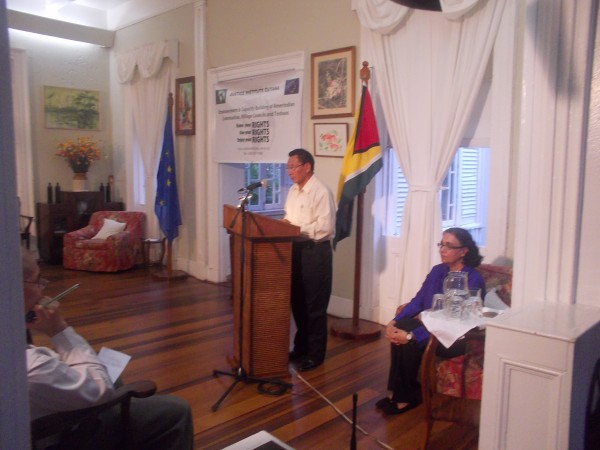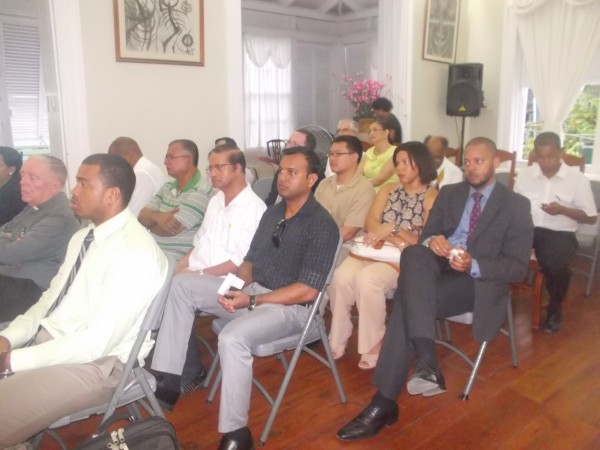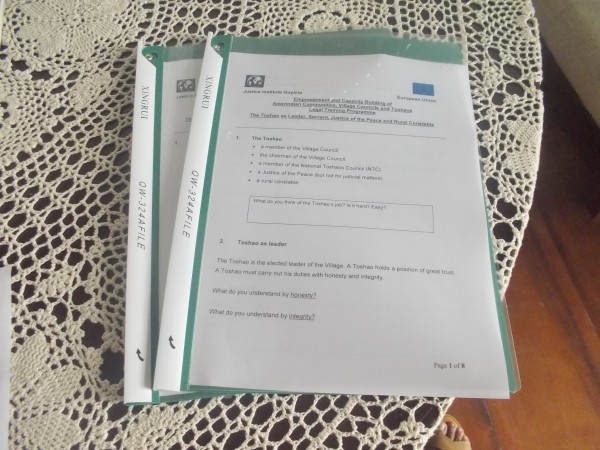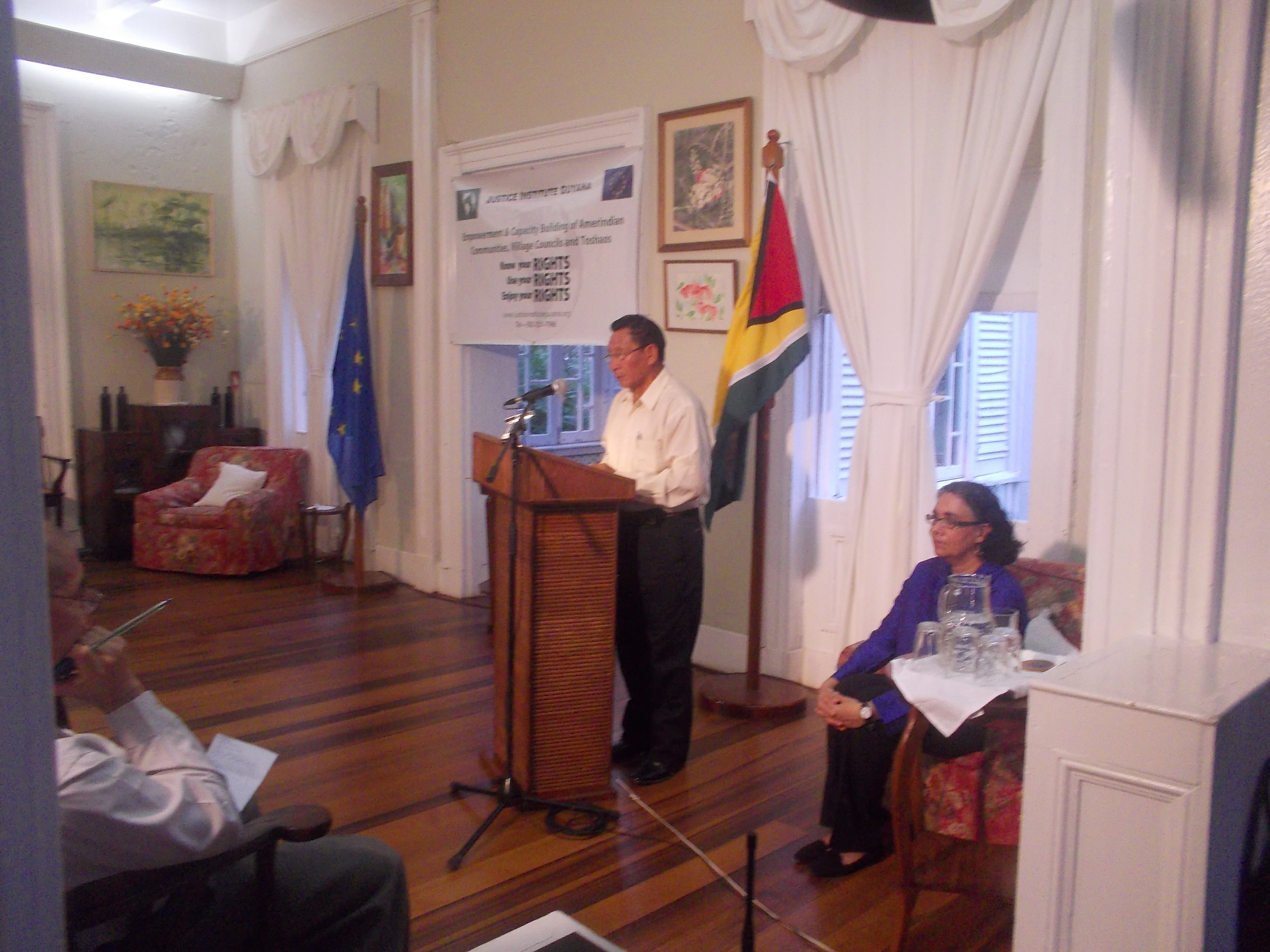Activity: The Launch of ‘Making An Amerindian Claim’
Hosts: Justice Institute Guyana, European Union Delegation
Date: Tuesday 11 June 2013


Press Clippings
Title: Justice Institute Guyana launches EU-funded Amerindian guide
Source: Guyana Times
Date: June 15, 2013

The Justice Institute Guyana on Tuesday launched a guide to help Amerindian communities resolve their land issues using the Amerindian Act 2006.
The guide explains how an Amerindian community that does not have any land can use the Amerindian Act to obtain an absolute title to the land that it occupies and uses, a release from the EU said. According to the European Union (EU), the guide will also prove invaluable for Amerindian communities which already have land but need more, since it sets out the steps by which these communities can obtain a title to extend their existing landholdings. The Amerindian Act procedure enables communities to get land titles on the basis of only 25 years of occupation. In contrast, proving native or aboriginal title to traditional lands requires a community to show occupation going back to the time when the colonial power first arrived.
The guide has been produced under a project which is funded by the EU under the European Instrument for Democracy and Human Rights (EIDHR). The project builds capacity among Amerindian toshaos (elected chiefs), village councils and communities to use the laws of Guyana to enable them to build democratic and equitable communities as Amerindian peoples.
“The most critical issue for Amerindian peoples is land. Amerindian peoples depend on the land for their physical well-being and in order to survive culturally as Amerindian peoples. Getting the land is only the first step. The Amerindian Act gives Amerindian peoples the power to transform their communities based on the rule of law, democracy and the wise use of resources. But they have to use the Amerindian Act 2006,” Justice Institute Guyana Director Melinda Janki said.
According to Clarindo Lucas, a former chairman of Region Nine and a highly respected Wapishana leader, ‘’a major problem for Amerindian peoples is that they do not know how to use the law. Through this EU supported project, the justice institute is working at the grass roots level direct with the people in their communities, to bring them information and simple explanations of the law.’’
In his remarks at the launch of the guide, head of Delegation of the EU to Guyana, Ambassador Robert Kopecký, highlighted that, ‘’the EU is intending to provide continuous support to these aspects in the coming years and will soon launch two calls for proposals for a total budget of approximately 1.5 million euros. These funds are complementary to the existing bilateral programmes in the sugar and sea defence sectors, among others.
He further said that, through this event, “it appears that Guyana can set a unique example in the world for the protection of indigenous people and of their environment. The European Union encourages both the civil society and the government of Guyana to pursue their efforts in that direction in the future.’’ Ambassador Kopecký expressed hope that the guide will aid the Amerindian community in their efforts at effective land management and acquisition.
The justice institute also teaches toshaos, village councillors and community residents their responsibilities under the Amerindian Act. Once they get their land title, they are responsible for what happens with the land and for protecting the land for future generations. One community, the Wai Wai, have declared their land as a protected area and are already benefiting from eco-tourism and other non-destructive income generating activities, using their powers under the Amerindian Act.

Title: Guide to land claims expected to empower Amerindian communities
Publication: Stabroek News
Date: June 13, 2013
A new publication has been launched to empower Amerindian communities through knowledge of their land rights.
‘Making an Amerindian Land Claim,’ which was produced as a result of a partnership between the Justice Institute Guyana Incorporated (JIG) and the European Union (EU), was launched at Moray House on Tuesday.
The publication is aimed at improving communities’ working knowledge of their rights, JIG Director Melinda Janki said, while noting that many Amerindian communities have little knowledge of how to use the 2006 Amerindian Act.
Since the law was enacted, Janki said, JIG has recorded that 20 communities have made land title claims under its provisions. She noted that there are currently 109 Amerindian communities in Guyana and only 11 of them do not have a land title.
Of the 98 with titles, she noted, there are about 40 communities who want extensions. “In Guyana, an Amerindian community can claim the land if they can show that they have occupied it for at least 25 years. Amerindian land [titling] in Guyana is simply a matter of occupation and use, culture and tradition,” Janki explained.
She said that it is important for communities to understand that their spiritual connection to the land was to translate into any land claims and when communities apply burial grounds and creeks and mountains which are revered and named needed to be specified in writing.
Janki also noted that literacy in English was not exclusive to filing land claims. “Get the old people to tell you history. It does not matter if they cannot write. By law, the minister must listen when your elders speak. It does not matter if you do not have money to pay for a survey of the state land that you want, draw out your boundaries on a piece of paper. By law the minister must look at your sketches and drawings,” she said.
The JIG Director noted that the publication guide was designed to show the step by step process of using the Amerindian Act to make a land claim and is reflective of all rights under the Act. She noted that while working on the publication, it was discovered that many communities have little knowledge of how to use the Act.
Janki said this was what made the JIG project so important is that it would bring the Act to the communities and to show how to properly use it for the preservation of the Amerindian identity.

